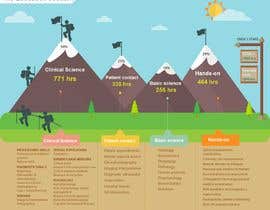Usual Everyday Practices That Cause Back Pain And Tips For Staying Clear Of Them
Usual Everyday Practices That Cause Back Pain And Tips For Staying Clear Of Them
Blog Article
Post Composed By-Dyhr Svenningsen
Keeping correct position and avoiding common mistakes in everyday activities can substantially influence your back health. From just how you rest at your desk to how you lift hefty objects, tiny modifications can make a huge difference. Picture a day without the nagging pain in the back that impedes your every relocation; the solution may be less complex than you believe. By making a few tweaks to your everyday behaviors, you could be on your means to a pain-free presence.
Poor Pose and Sedentary Way Of Living
Poor posture and a sedentary lifestyle are 2 significant contributors to neck and back pain. When you slouch or hunch over while resting or standing, you put unneeded pressure on your back muscular tissues and spinal column. This can result in muscle inequalities, stress, and ultimately, chronic pain in the back. Furthermore, sitting for extended periods without breaks or physical activity can deteriorate your back muscle mass and cause stiffness and discomfort.
To battle visit the next document , make a mindful effort to sit and stand right with your shoulders back and straightened with your ears. Remember to maintain your feet level on the ground and avoid crossing your legs for extensive periods.
Incorporating regular extending and strengthening workouts right into your daily regimen can additionally help boost your position and minimize neck and back pain associated with a less active way of life.
Incorrect Training Techniques
Incorrect training techniques can considerably contribute to neck and back pain and injuries. When you lift hefty objects, remember to flex your knees and use your legs to raise, rather than counting on your back muscles. Prevent twisting your body while lifting and maintain the things near to your body to reduce strain on your back. It's critical to maintain a straight back and avoid rounding your shoulders while lifting to avoid unneeded stress on your spine.
Constantly assess the weight of the item before lifting it. If it's also heavy, ask for aid or use devices like a dolly or cart to transfer it safely.
Bear in mind to take breaks during lifting jobs to give your back muscular tissues an opportunity to rest and stop overexertion. By carrying out correct training techniques, you can prevent pain in the back and minimize the danger of injuries, guaranteeing your back remains healthy and balanced and strong for the long term.
Absence of Normal Exercise and Stretching
An inactive way of living devoid of routine workout and stretching can significantly contribute to pain in the back and pain. When you don't take part in exercise, your muscles become weak and inflexible, causing bad stance and enhanced stress on your back. Normal exercise assists reinforce the muscle mass that sustain your back, boosting stability and decreasing the threat of pain in the back. Integrating extending into your regimen can additionally improve adaptability, protecting against stiffness and pain in your back muscular tissues.
To avoid neck and back pain triggered by an absence of exercise and extending, aim for at the very least half an hour of modest exercise most days of the week. Include workouts that target your core muscular tissues, as a strong core can help relieve stress on your back.
Additionally, take breaks to extend and move throughout the day, particularly if you have a workdesk work. harlem chi like touching your toes or doing shoulder rolls can assist soothe tension and protect against back pain. Focusing on regular workout and stretching can go a long way in keeping a healthy and balanced back and decreasing pain.
Conclusion
So, remember to sit up right, lift with your legs, and remain energetic to stop pain in the back. By making straightforward changes to your day-to-day routines, you can avoid the pain and restrictions that include neck and back pain. Care for your spinal column and muscle mass by exercising great posture, correct lifting techniques, and normal exercise. Your back will certainly thank you for it!
